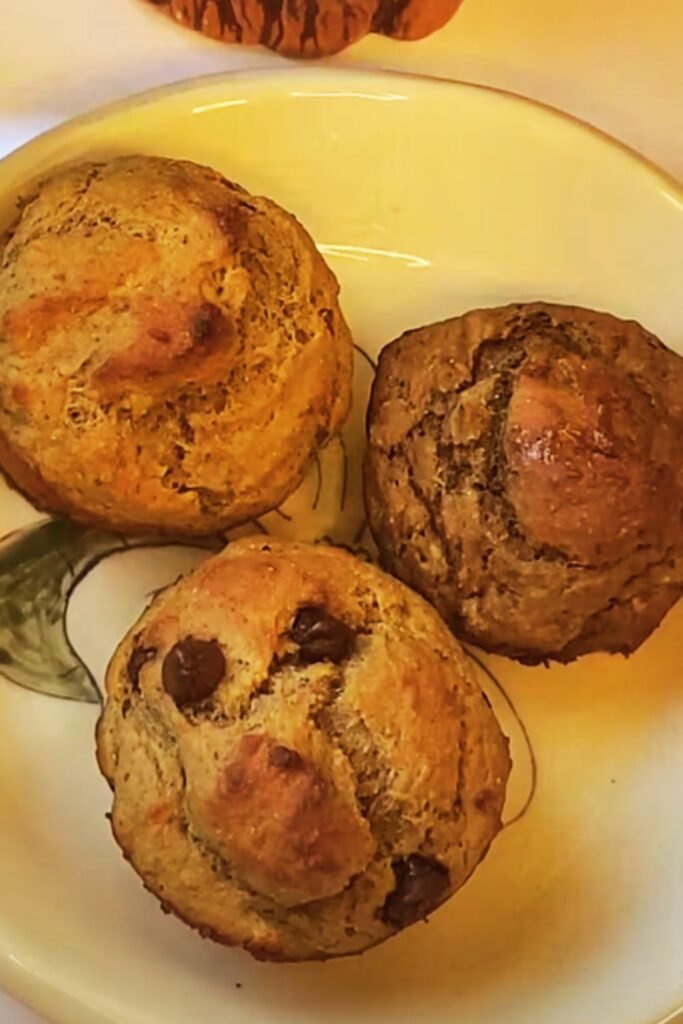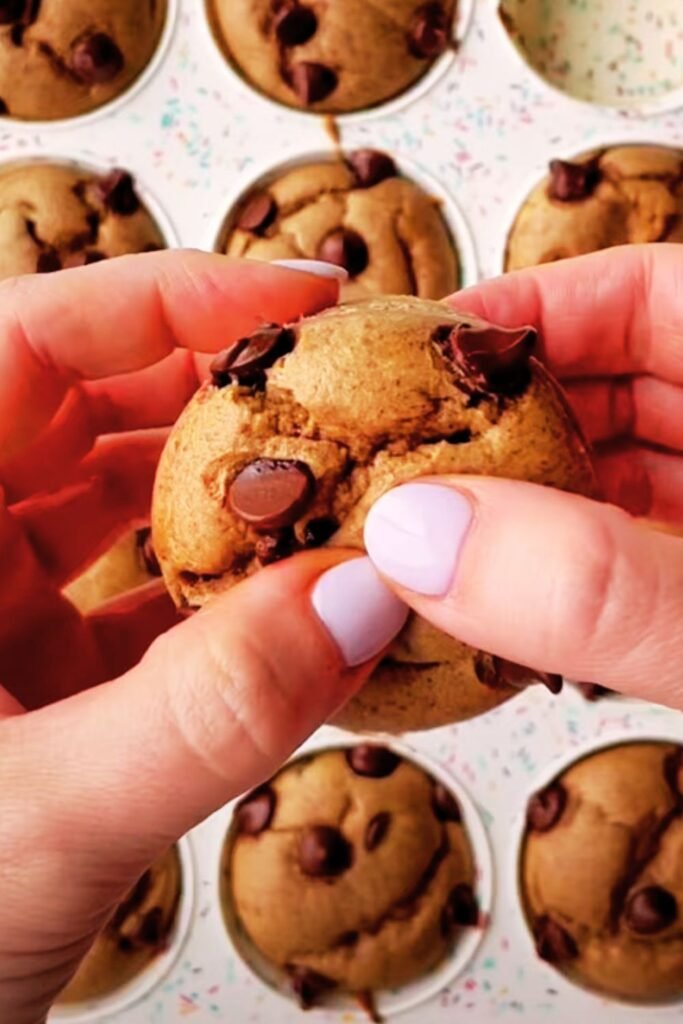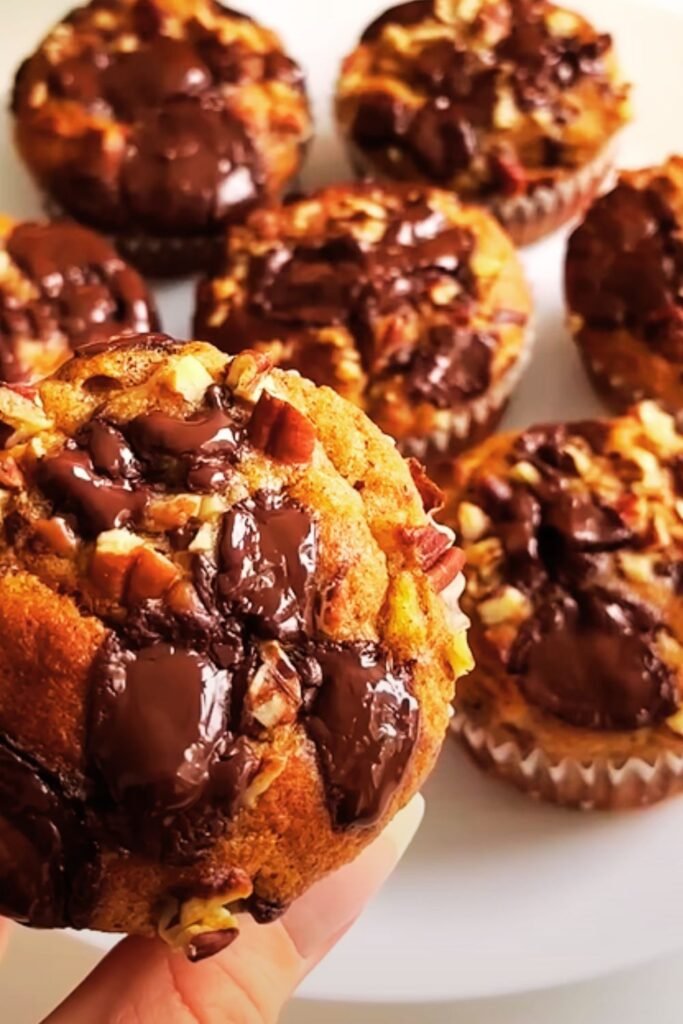I’ve been on a mission to create healthier versions of my favorite baked goods, and these oat fiber banana muffins have become my absolute obsession. After countless kitchen experiments and a few spectacular failures (let’s not talk about the batch that turned into hockey pucks), I finally perfected this recipe that delivers all the flavor you crave with a fraction of the calories.
These aren’t your typical banana muffins loaded with sugar and refined flour. Instead, I’ve crafted a recipe that harnesses the power of oat fiber – a nutritional powerhouse that most people overlook. The result? Muffins that are incredibly satisfying, packed with fiber, and won’t derail your healthy eating goals.
What Makes These Muffins Special
When I first started experimenting with oat fiber, I’ll admit I was skeptical. Could this relatively unknown ingredient really transform my baking? The answer is a resounding yes. Oat fiber brings unique properties that make these muffins extraordinary.
Oat Fiber: This is finely ground oat hulls that have been processed to remove most carbohydrates, leaving behind pure fiber. Unlike regular oat flour, oat fiber is virtually calorie-free and provides incredible bulk and texture to baked goods.
Banana Power: Beyond their natural sweetness, bananas contribute moisture, potassium, and natural binding properties that work beautifully with oat fiber.
Low-Calorie Magic: Each muffin contains approximately 85 calories compared to traditional banana muffins that can pack 250-300 calories each.
The beauty of this recipe lies in its simplicity and the way these ingredients work together. I’ve tested this combination dozens of times, adjusting ratios until I achieved that perfect tender crumb that doesn’t taste “diet-y” or artificial.
Nutritional Breakdown and Benefits
Let me share the impressive nutritional profile that makes these muffins a guilt-free indulgence:
| Nutrient | Per Muffin | % Daily Value |
|---|---|---|
| Calories | 85 | 4% |
| Total Fat | 2.5g | 3% |
| Saturated Fat | 0.5g | 2% |
| Cholesterol | 15mg | 5% |
| Sodium | 180mg | 8% |
| Total Carbohydrates | 18g | 6% |
| Dietary Fiber | 12g | 48% |
| Sugars | 6g | – |
| Protein | 4g | 8% |
| Potassium | 225mg | 6% |
| Vitamin C | 4mg | 4% |
The fiber content is where these muffins truly shine. With 12 grams of fiber per muffin, you’re getting nearly half your daily fiber needs in one delicious serving. This high fiber content helps with satiety, blood sugar regulation, and digestive health.
Ingredient Deep Dive
Understanding your ingredients transforms good baking into great baking. Here’s my detailed breakdown of each component and why I chose them:
Primary Ingredients:
Oat Fiber (1 cup): The star of our show. I prefer Anthony’s Oat Fiber or NuNaturals brand for consistency. This ingredient absorbs moisture like a sponge, so proper hydration is crucial.
Ripe Bananas (3 large): Look for bananas with brown spots – they’re sweeter and mash more easily. I’ve found that bananas at this ripeness level provide the perfect balance of sweetness and moisture.
Eggs (2 large): These provide structure and richness. I always use room temperature eggs for better incorporation.
Unsweetened Applesauce (1/2 cup): This adds moisture while keeping calories low. Choose a brand without added sugars.
Flavor Enhancers:
| Ingredient | Amount | Purpose |
|---|---|---|
| Vanilla Extract | 2 tsp | Enhances overall flavor profile |
| Cinnamon | 1 tsp | Adds warmth and complements banana |
| Nutmeg | 1/4 tsp | Subtle complexity |
| Salt | 1/2 tsp | Balances sweetness |
| Baking Powder | 2 tsp | Provides lift and texture |

The Science Behind Oat Fiber Baking
Working with oat fiber requires understanding its unique properties. Unlike traditional flours, oat fiber doesn’t contain gluten or starch, which means it behaves differently in recipes.
Absorption Properties: Oat fiber can absorb up to 7 times its weight in liquid. This is why my recipe includes more wet ingredients than you might expect in traditional muffin recipes.
Texture Creation: The fiber creates a tender, slightly dense texture that’s incredibly satisfying. I’ve learned that overmixing can make the batter gummy, so gentle folding is essential.
Binding Challenges: Without gluten, we rely on eggs and the natural pectins in bananas to hold everything together. This is why proper banana ripeness is crucial.
Step-by-Step Preparation Method
My method has been refined through trial and error, and I’ve learned that technique matters just as much as ingredients when working with oat fiber.
Preparation Phase:
- Preheat your oven to 350°F (175°C)
- Line 12 muffin cups with paper liners or grease thoroughly
- Allow all refrigerated ingredients to reach room temperature
Wet Ingredient Assembly: 4. In a large bowl, mash bananas until mostly smooth (small lumps are fine) 5. Whisk in eggs one at a time until fully incorporated 6. Add applesauce, vanilla extract, and any liquid sweetener 7. Mix until the mixture is uniform and well-combined
Dry Ingredient Integration: 8. In a separate bowl, whisk together oat fiber, baking powder, cinnamon, nutmeg, and salt 9. This step prevents clumping and ensures even distribution
Combining Wet and Dry: 10. Add dry ingredients to wet ingredients in three additions 11. Fold gently with a rubber spatula – don’t overmix 12. The batter should be thick but spreadable
Baking Process: 13. Divide batter evenly among muffin cups (about 1/4 cup each) 14. Bake for 22-25 minutes until tops spring back when lightly touched 15. Cool in pan for 5 minutes before transferring to wire rack

Troubleshooting Common Issues
Through my extensive testing, I’ve encountered and solved several common problems that arise when baking with oat fiber:
Problem: Dry, Crumbly Texture
- Solution: Increase liquid ingredients by 2-3 tablespoons
- Cause: Oat fiber absorbed more moisture than anticipated
Problem: Dense, Heavy Muffins
- Solution: Ensure baking powder is fresh and don’t overmix
- Cause: Expired leavening or gluten-like development from overmixing
Problem: Gummy Consistency
- Solution: Reduce mixing time and check oat fiber quality
- Cause: Overmixing or inferior oat fiber that wasn’t properly processed
Problem: Lack of Sweetness
- Solution: Add 2-3 tablespoons of your preferred sweetener
- Cause: Bananas weren’t ripe enough or personal taste preference
Customization Options and Variations
One aspect I love about this base recipe is its versatility. Here are my favorite variations that I’ve developed:
Chocolate Chip Version:
- Add 1/3 cup sugar-free chocolate chips
- Reduce applesauce by 2 tablespoons to compensate for added bulk
Blueberry Burst:
- Fold in 1/2 cup fresh or frozen blueberries
- Toss berries in 1 tablespoon oat fiber before adding to prevent sinking
Spiced Banana:
- Increase cinnamon to 1.5 teaspoons
- Add 1/4 teaspoon ground ginger and pinch of cardamom
Protein-Packed:
- Replace 1/4 cup oat fiber with vanilla protein powder
- Increase liquid by 3-4 tablespoons to maintain proper consistency
| Variation | Calories per Muffin | Additional Fiber |
|---|---|---|
| Basic Recipe | 85 | 12g |
| Chocolate Chip | 95 | 12g |
| Blueberry | 90 | 13g |
| Spiced Version | 85 | 12g |
| Protein-Packed | 105 | 11g |
Storage and Meal Prep Tips
These muffins are perfect for meal prep, and I’ve developed a system that keeps them fresh and convenient:
Short-Term Storage (3-4 days):
- Store in airtight container at room temperature
- Place paper towel in bottom of container to absorb excess moisture
- Separate layers with parchment paper
Freezer Storage (up to 3 months):
- Wrap individual muffins in plastic wrap
- Place wrapped muffins in freezer-safe bags
- Label with date and contents
Reheating Methods:
- Room temperature: Remove from freezer 2 hours before eating
- Microwave: 30-45 seconds from frozen
- Oven: 350°F for 8-10 minutes from frozen
I typically make a double batch on Sunday and freeze half for quick breakfast options throughout the week.

Serving Suggestions and Pairings
These muffins are delicious on their own, but I’ve discovered several pairings that elevate the experience:
Breakfast Combinations:
- Greek yogurt with berries for added protein
- Almond butter spread for healthy fats
- Fresh fruit salad for vitamin boost
Afternoon Snack Ideas:
- Herbal tea for a calming combination
- Coffee for an energy boost
- Sparkling water with lemon for refreshment
Light Dessert Options:
- Sugar-free whipped cream and cinnamon
- Fresh berries and mint garnish
- Drizzle of sugar-free maple syrup
The high fiber content makes these muffins incredibly filling, so I often pair them with lighter accompaniments to create balanced meals.
Health Benefits Beyond the Numbers
While the nutritional facts are impressive, the real-world benefits of incorporating these muffins into your diet extend far beyond what appears on paper:
Digestive Health: The 12 grams of fiber per muffin support healthy gut bacteria and regular digestion. I’ve noticed improved digestive comfort since making these a regular part of my routine.
Blood Sugar Management: The fiber content helps slow sugar absorption, preventing the blood sugar spikes associated with traditional baked goods. This makes them suitable for people managing diabetes or following low-glycemic diets.
Satiety Factor: The combination of fiber and protein keeps you satisfied for hours. I often eat one mid-morning and don’t think about food again until lunch.
Weight Management Support: At only 85 calories each, these muffins satisfy sweet cravings without derailing weight loss efforts.
Cost Analysis and Budget-Friendly Tips
Let me break down the economics of making these muffins, because eating healthy shouldn’t break the bank:
| Ingredient | Cost per Batch | Cost per Muffin |
|---|---|---|
| Oat Fiber | $1.20 | $0.10 |
| Bananas | $1.00 | $0.08 |
| Eggs | $0.50 | $0.04 |
| Applesauce | $0.75 | $0.06 |
| Other ingredients | $0.55 | $0.05 |
| Total | $4.00 | $0.33 |
Compare this to store-bought “healthy” muffins that cost $2-3 each, and you’re saving significant money while controlling exactly what goes into your food.
Money-Saving Tips:
- Buy oat fiber in bulk online for better pricing
- Use overripe bananas that grocery stores often discount
- Make double batches to maximize your baking time investment
Frequently Asked Questions
Q: Can I substitute regular oat flour for oat fiber? No, they’re completely different ingredients. Oat flour contains starches and will dramatically change the texture and nutritional profile. Oat fiber is specifically processed oat hulls with most carbohydrates removed.
Q: Why are my muffins turning out dry despite following the recipe exactly? Oat fiber brands can vary in absorption capacity. Start with the recipe as written, but be prepared to add 2-3 extra tablespoons of liquid if needed. Also, ensure your bananas are very ripe – they should have brown spots and mash easily.
Q: Can I make these muffins vegan? Yes! Replace the eggs with flax eggs (2 tablespoons ground flaxseed mixed with 6 tablespoons water, let sit 5 minutes). The texture will be slightly different but still delicious.
Q: How do I know when the muffins are properly baked? The tops should spring back when lightly touched, and a toothpick inserted in the center should come out with just a few moist crumbs. Overbaking will result in dry muffins.
Q: Can I reduce the fiber content if it’s too much for my system? Absolutely. Replace up to half the oat fiber with almond flour or coconut flour. This will increase calories slightly but may be easier on sensitive digestive systems.
Q: What’s the best way to incorporate these into a weight loss plan? I recommend having one as a mid-morning snack or pre-workout fuel. The fiber content helps control appetite, and the natural sugars from bananas provide steady energy.
Q: Can I make mini muffins instead? Yes! Use a mini muffin pan and reduce baking time to 12-15 minutes. You’ll get about 24 mini muffins, each with approximately 42 calories.
Q: Why do my muffins sometimes have a slightly gritty texture? This usually indicates lower-quality oat fiber. Invest in a reputable brand like Anthony’s or NuNaturals. Also, make sure you’re not overmixing the batter.
Q: Can I add sweetener to make them sweeter? Definitely! Add 2-3 tablespoons of your preferred sweetener (stevia, erythritol, or monk fruit). Liquid sweeteners work best in this recipe.
Q: How do these compare nutritionally to regular banana muffins? Traditional banana muffins typically contain 250-300 calories, 12-15g sugar, and only 2-3g fiber. These contain 85 calories, 6g natural sugars, and 12g fiber – a dramatic improvement in nutritional density.
These oat fiber banana muffins have revolutionized my approach to healthy baking. They prove that you don’t have to sacrifice taste for nutrition, and they’ve become a staple in my kitchen. Whether you’re managing your weight, increasing fiber intake, or simply want a delicious and satisfying treat, this recipe delivers on all fronts.
The key to success lies in understanding how oat fiber behaves and being patient with the process. Once you master this technique, you’ll find yourself adapting it for countless other baked goods. I encourage you to experiment with the variations I’ve suggested and create your own signature versions.
Remember, healthy eating should be enjoyable and sustainable. These muffins make it easy to stick to your nutritional goals without feeling deprived. Give them a try, and I’m confident they’ll become a regular feature in your healthy eating repertoire.